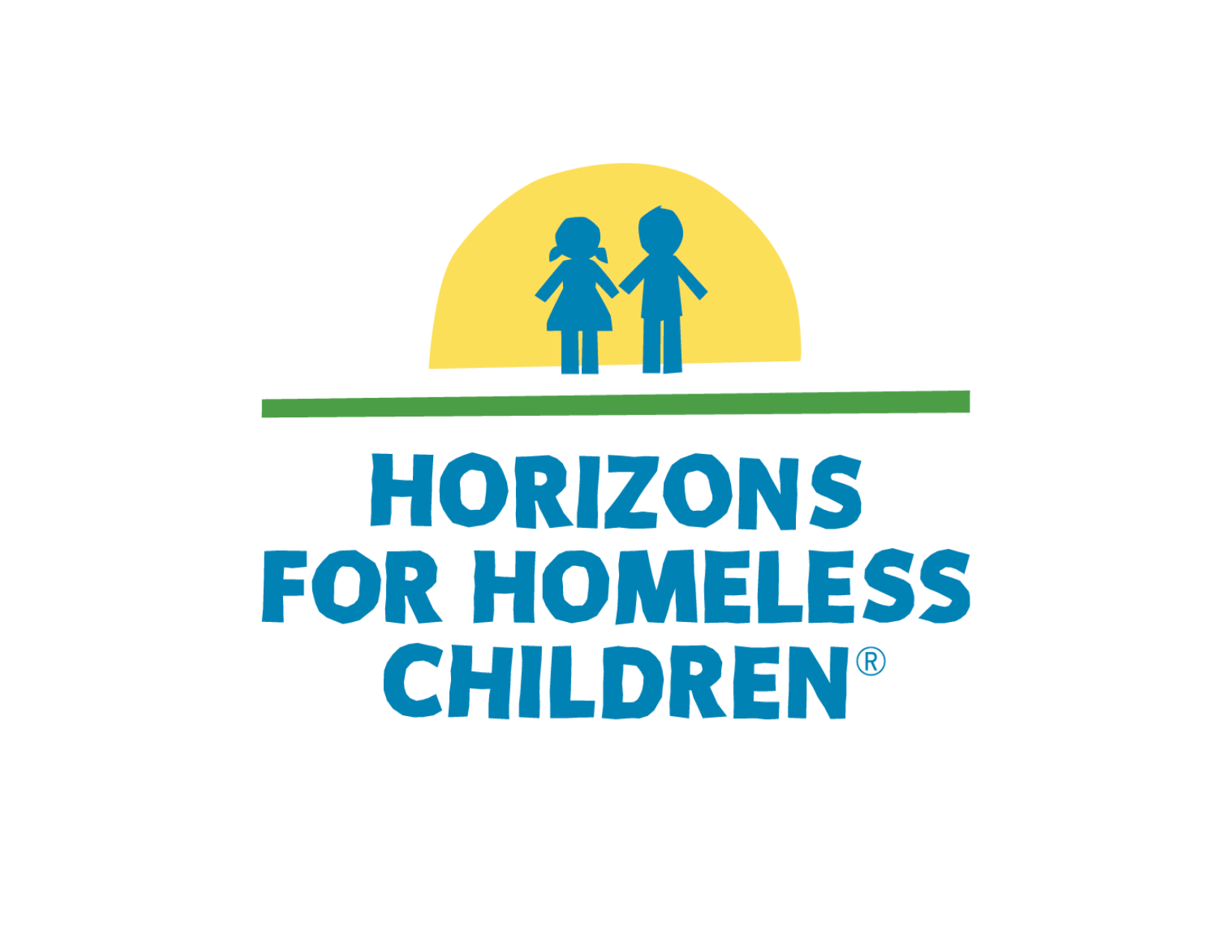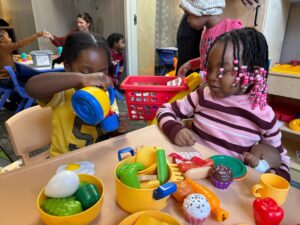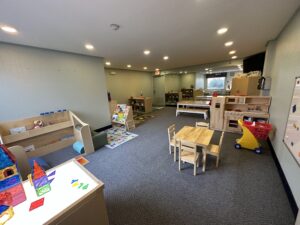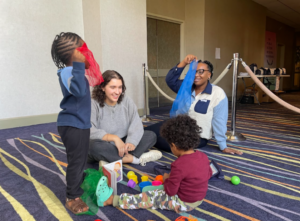A Day in Horizons’ Digital Classrooms
- por adrag
Horizons’ classrooms are a pillar of stability in the lives of children experiencing homelessness. Consistent classroom schedules and a curriculum created to support children experiencing trauma work to mitigate the impact homelessness has on a child. After Horizons closed Early Education Centers to adhere to state guidelines during the COVID-19 crisis, Horizons’ dedicated teaching staff stepped up to ensure children could benefit from the school routine they have come to rely on.
“On that last day parents were looking at us like ‘What now?’” said Tashiani Brito, a lead Preschool teacher in Roxbury. “We saw their anxiety firsthand and knew we needed a plan to keep some semblance of routine in their children’s lives.”
Horizons’ teachers began researching the most effective method for bringing a virtual classroom to students. Remaining cognizant of technology variances among households, teachers worked diligently to create a framework for “digital classrooms” ensuring all families were able to stay connected with Horizons.
“Our students do not fully understand COVID-19 and its implications. From their perspective one day they were in school and now they’re not,” said Lisa Crowley, lead Universal Preschool teacher in Jamaica Plain. “We had to find meaningful ways to be there for students, and letting them see our familiar faces while we could see theirs was important.”
“When a child is experiencing homelessness there is not a lot of consistency in their life. They may be jumping from shelter to shelter; even the people in their lives may change. As their teachers it was important for us to make sure they knew we were not another inconsistency,” added Crowley.
Horizons’ teachers decided on using the educational tool ClassDojo. Teachers sent invites to parents to “join the classroom” and ClassDojo became Horizons’ hub for sharing educational content.
Lead Infant/Toddler Teacher, Shari Atamian, reads “A Cheese and Tomato Spider,” in a virtual read aloud for her students. While the pairings in this book may seem strange to adults, it introduces children to unexpected adjective-noun combinations that support early literacy and foster creative thinking.
Using ClassDojo Horizons’ teachers share videos of themselves reading aloud, craft ideas, writing activities, even songs and dances. Using ClassDojo’s message board teachers share links to Zoom meetings so children can interact with their classmates. Teachers share resources related to the COVID-19 crisis – ensuring families are aware of the help available to them.
While ClassDojo remains the primary source of contact between teachers and families, teachers have also implemented FaceTime calls and Zoom meetings to ensure all children, regardless of technology can see their teachers and classmates. Horizons’ teachers have gone to tremendous lengths to make sure they can still make meaningful connections with students.
“Our goal in implementing ClassDojo was to keep children on a schedule. In order to do that we try to mirror the routine we would have in the classroom,” said Brito. “Each day, I get online in the morning and share a video of myself saying good morning to each student – just the way I would in the classroom. Later that morning I ask students how they are feeling. I want them to know it is okay to be scared and uncertain during this time. It’s okay if they’re missing their classmates and teachers – we’re missing them too.”
For older children, teachers also use ClassDojo to maintain the progress their students have made in the classroom by sharing activities related to their curriculum.
“Each week we give parents activities to do with their children based on our curriculum. That may be a writing exercise, a science experiment, recognizing the change of the season, all things we would typically cover in the classroom. We are trying to make sure students are building on the skills they have learned over the past year,” added Brito.
Another unique challenge Horizons’ teachers face are families limited resources. “We don’t know what supplies they have access to and we don’t want to assume,” said Crowley.
Horizons’ teachers pick activities that require bare minimum supplies. Students usually just need a piece of paper, or a pen to participate in the activity. Most recently, students made a caterpillar out of an egg carton, recalling The Hungry Caterpillar, – a classroom favorite.
Horizons’ parents are also feeling the impact of empty classrooms, but are grateful for the dedication and inventiveness of Horizons’ teachers, and their commitment to remain connected to families.
“My daughter wants to go to school and not being able to go is breaking both our hearts. But in the midst of it, her teachers are still doing videos and sharing them online so we can maintain a routine and a virtual connection via Zoom,” said Alyscia, a mother of a Horizons’ preschooler. “Horizons has truly been a strength for my family.”
Despite the unique challenges the COVID-19 crisis has brought to Horizons, teachers remain as motivated and as dedicated as ever. Overcoming technological challenges, they have stepped up for families in an unprecedented ways. By staying innovative in their approach, and unwavering in their commitment to the children and families we serve, Horizons’ teachers have brought the classroom to students. They’ve proved that learning can happen anywhere, with the right attitude and the support of a loving teacher.
As we prepare to transition back to an in-person classroom, we want to keep some of what we’ve learned over the course of these last months. Building closer connections to families lives beyond our centers has been and will continue to be an important part of our interactions. At the end of the day, we want to help build healthy, young minds and that happens inside and outside our care.
This piece was written by Rachel San Giacomo, a regular contributor to Horizons’ blog.






